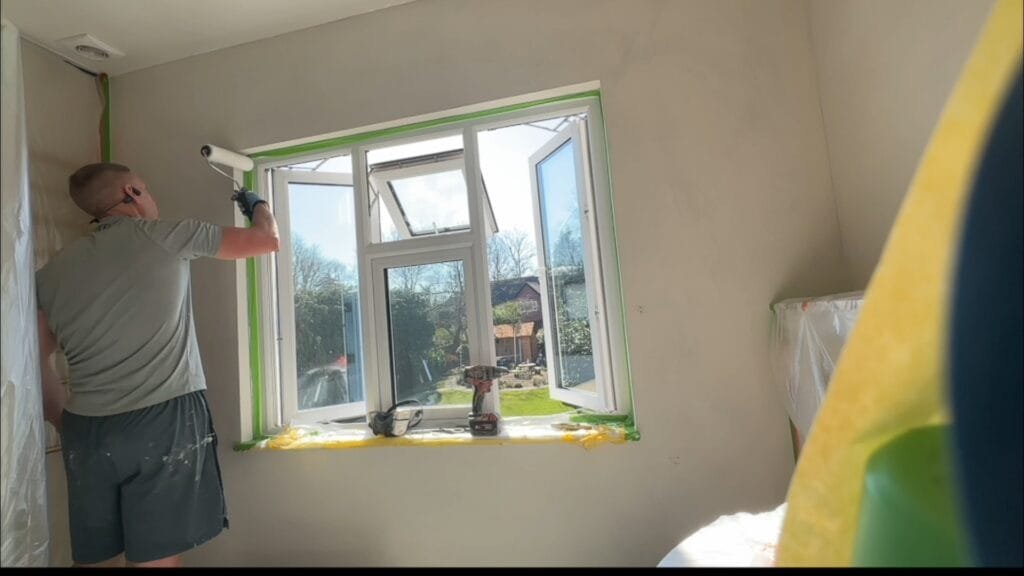Get 10% descount on first project
The Ultimate Guide to Microcement Bathrooms: A High-End Waterproof Finish

Introduction
Microcement is revolutionizing modern bathroom design, offering a seamless, waterproof, and durable finish. Whether you’re a professional plasterer or a homeowner looking for a sleek, contemporary aesthetic, microcement provides a resilient and stylish alternative to traditional tiles. In this guide, we’ll walk you through the complete process of applying microcement in bathrooms, from preparation to the final sealing steps. By the end, you’ll understand why this finish is an excellent choice for high-moisture areas like bathrooms and kitchens.
What Is Microcement and Why Use It for Bathrooms?
Microcement is a thin, polymer-modified coating that can be applied over a variety of surfaces, including tiles, drywall, and concrete. It is highly durable, resistant to water, mold, and fungi, making it an excellent option for bathrooms. Unlike tiles, microcement does not have grout lines, which means fewer places for mold and dirt to accumulate.
Key Benefits of Microcement in Bathrooms:
- Waterproof & Durable: With proper sealing, microcement is 100% waterproof and can withstand daily moisture exposure.
- Seamless Aesthetic: Creates a sleek, continuous surface without grout lines.
- Customizable Finishes: Available in a variety of colors and textures.
- Low Maintenance: Easy to clean and resistant to mold and mildew.
Step-by-Step Guide to Applying Microcement in Bathrooms
1. Surface Preparation
Before applying microcement, ensure the surface is:
- Clean and Dry: Remove dust, grease, or any existing loose material.
- Smooth and Even: Use reinforcement mesh on uneven surfaces for extra stability.
- Properly Primed: Apply a bonding agent to improve adhesion.
2. Applying the Base Coats
- First Base Coat: Apply a reinforced microcement base coat with embedded mesh for added strength.
- Second Base Coat: Smooth the surface with another base layer to ensure a strong foundation.
3. Applying the Colored Coats
- First Color Coat: Use the chosen microcement color (e.g., stucco white) to start achieving the desired look.
- Second Color Coat: Apply a second layer to deepen the shade and create a smooth finish.
- Sanding Between Layers: Use a 240-grit sandpaper to refine the texture before sealing.
4. Sealing with Epoxy Sealer
To ensure a waterproof and long-lasting finish, microcement requires a high-quality sealer. Here’s how:
Mixing the Epoxy Sealer
- Use a two-part epoxy sealer (resin and hardener) for maximum protection.
- Mix manually with a paint stirrer to avoid introducing air bubbles.
- Work in small batches, as the mixed sealer has a 45-minute working time.
Applying the First Sealer Coat
- Use a New Microfiber Roller: The epoxy sealer is strong, and reusing rollers can lead to contamination.
- Start from the Bottom: Apply in short, random strokes to avoid roller marks.
- Ensure Even Coverage: Go over the surface multiple times to minimize air bubbles and streaks.
5. Final Sanding and Second Sealer Coat
- Allow the first coat to cure for at least 12 hours before applying the final coat.
- Lightly sand the surface again with 240-grit sandpaper to remove any trapped dust.
- Apply the second coat using the same technique for a flawless, high-gloss or matte finish.
Why Microcement is Ideal for Bathrooms
Microcement is not only practical but also enhances the overall look of a bathroom. Here’s why it stands out:
1. Water and Mold Resistance
With its non-porous surface, microcement prevents moisture penetration, reducing the risk of mold and mildew growth.
2. Long-Lasting Durability
Microcement is highly resistant to scratches, stains, and humidity, making it perfect for bathroom walls, showers, and floors.
3. Aesthetic Appeal
From modern minimalism to industrial chic, microcement offers a variety of finishes that can complement any interior design.
Final Thoughts
Microcement is an excellent choice for anyone looking to create a waterproof, durable, and stylish bathroom. By following the proper application and sealing techniques, you can achieve a high-end finish that not only looks stunning but also stands the test of time.
If you’re inspired by this guide, don’t forget to share it with others or leave a comment below with your thoughts. For more expert insights into microcement applications, subscribe to our updates!
By implementing microcement in your bathroom, you’re investing in a seamless and modern look that’s both functional and elegant. Ready to transform your space? Let’s get started!



